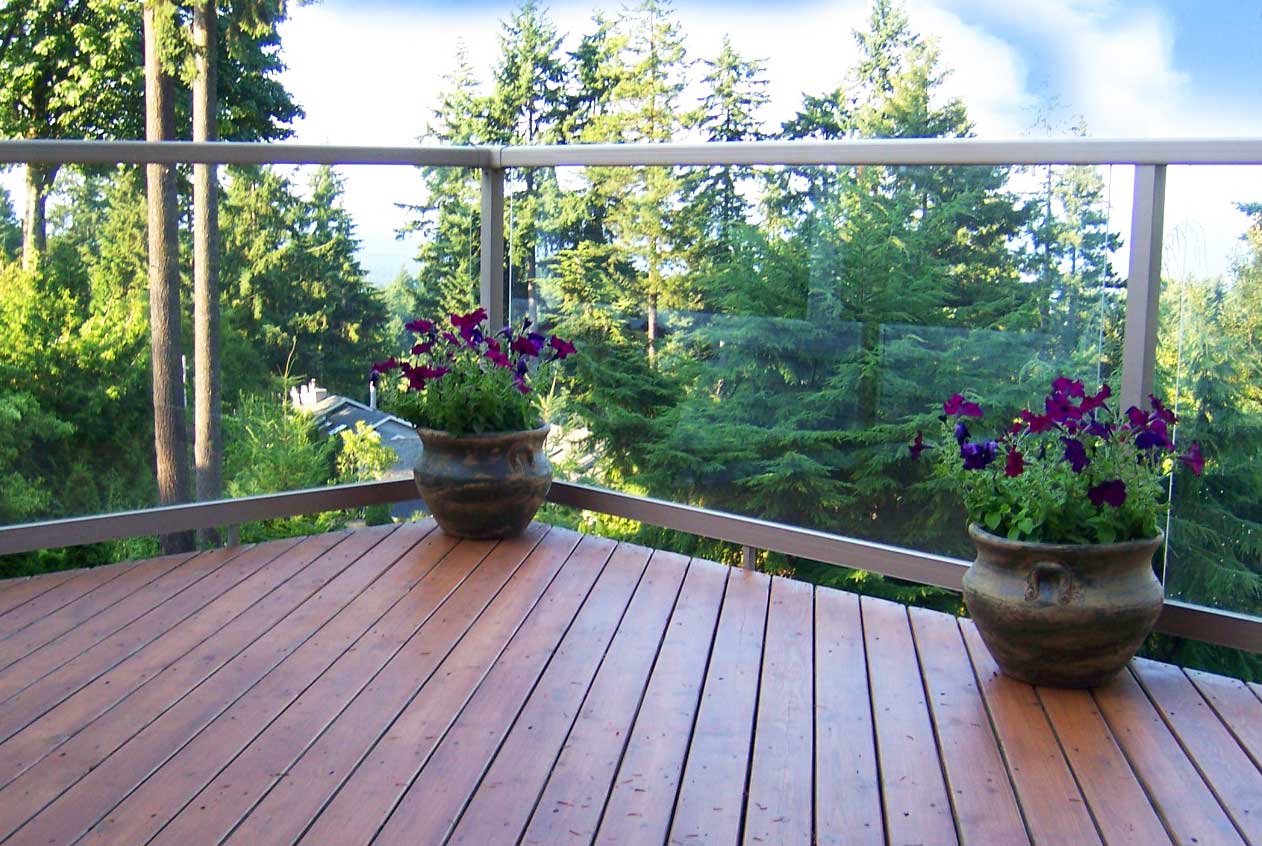Wood color restorers: If the deck is clean and only discolored because of sunlight exposure or iron stains from the nails holding it down, then you may need to simply give it a rinse using oxalic acid (Oxcon™). Dark brown or reddish tannins in wood like Western Cedar and Redwood are soluble in water. When surface water evaporates, it deposits those tannins on the surface of the wood causing water stain. Additionally, iron stains from nails and screws react with those tannins to cause black iron stains. These kinds of discoloration are usually very easily removed with Oxcon. However, remember that Oxcon is not a cleaner, but a wood brightener, so the deck must be clean before a treatment with Oxcon.
Alternative cleaning methods: Power washers are commonly used to prepare a deck for cleaning. However, only someone with experience should use power washing. Improperly used power washers leave surface damage and spray patterns in wood that will only be highlighted by your deck stain. Experienced contractors and do-it-yourselfers can do this kind of work, but remember to approach it carefully for best results. If more serious measures are required to strip many layers of old finish, paint strippers could be required. We are happy to help guide you through your preparation process using the simplest and least expensive methods possible. Just call any of our toll free numbers for more information.
Staining Your Wood Deck
After you have all of the old weathering, bird droppings, mold, mildew, iron stains and other stuff removed, you are ready to apply the new finish. Remember to do a little preparation for the “stain job.” Make sure to allow adequate drying time after cleaning and rinsing.
Spend just a little extra money to get good tools for the job. If using a brush, purchase a good one that is made for the kind of deck stain that you are using. Never use a roller on decking. If you are spraying, follow the sprayer with a brush to even out and work the finish into the wood. It is always best to apply your finishes out of the direct sunlight. When this is not possible, doing the job early in the day when the sun is at an angle rather than directly overhead will do the trick. The wood surface temperature can easily be from 20 to 50 degrees above the air temperature in direct sunlight. Watch your application temperatures!I like to use a paint pad on a broom handle to refinish my deck because it allows me to do the work standing up. But I must be careful to apply a thin coat and keep my application rate consistent. I also make sure to plan my application patterns carefully to avoid lap marks. I look at each zone that I am finishing and think about where to begin and end. Then I run the finish down lines of deck planks (usually from 4 to 6 at a time) from one end all the way to the other, so that I can keep a wet edge and never make a lap mark.
FAQ
- How often should I clean my deck?
A good schedule would be two normal cleanings per year. The first should be after the pollen season, and this will remove all the winter debris as well. The second should be in late fall prior to cold weather as any algae or mold growth will be removed that may have sprung up during hot, humid weather. Again, do not expect the cleaner to be a “magical” product that will spirit away all that stuff, use a stiff bristle brush and a bit of good old elbow grease to make the job successful. - Can I use Bleach to clean my deck?
First of all, “bleach” is not a cleaner; it has no detergents or surfactants to help remove dirt. Second “bleach” is hazardous to humans, plants and animals as well as the fibers in wood. “bleach” will destroy lignin in the wood and cause fuzzing and early finish failure. So we do not recommend the use of “bleach” as a cleaner. - I just finished building a new deck; can I apply Deck Defense right away?
The general answer would be no. New pressure treated wood needs dry out or season a bit before any stain application is done. Four to six weeks as a rule of thumb, and then clean with Log Wash™ to open up surface and remove any mill glaze that still may be present.
My own experience is that best balance of cost, labor and appearance is to do a thorough cleaning and then apply Deck Defense. About a year later, a light cleaning and refresher coat is all that is needed to make it look like new again. Then you can go a couple of years without anything other than cleaning. Since my deck is the one where the neighborhood parties happen, it has to stay looking good. I've never let it go for over three years. In the Pacific Northwest decks get lots of rain and pollen from cedar trees. With a little experience, you will see what works for you. Deck maintenance is easy with the right approach.

